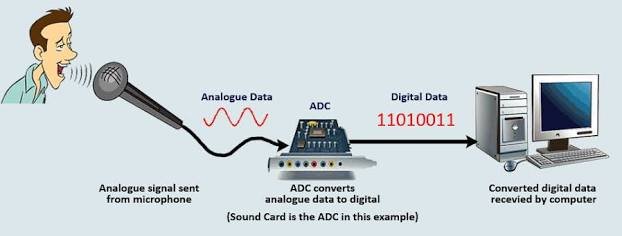Analog and Digital Data

Data can be analog or digital. The term analog data refers to information that is contin-
uous; digital data refers to information that has discrete states. For example, an analog
clock that has hour, minute, and second hands gives information in a continuous form;
the movements of the hands are continuous. On the other hand, a digital clock that
reports the hours and the minutes will change suddenly from 8:05 to 8:06.
Analog data, such as the sounds made by a human voice, take on continuous values.
When someone speaks, an analog wave is created in the air. This can be captured by a
microphone and converted to an analog signal or sampled and converted to a digital
signal.
Digital data take on discrete values. For example, data are stored in computer
memory in the form of Os and 1s. They can be converted to a digital signal or modu-
lated into an analog signal for transmission across a medium.
Data can be analog or digital. The term analog data refers to information that is contin-
uous; digital data refers to information that has discrete states. For example, an analog
clock that has hour, minute, and second hands gives information in a continuous form;
the movements of the hands are continuous. On the other hand, a digital clock that
reports the hours and the minutes will change suddenly from 8:05 to 8:06.
Analog data, such as the sounds made by a human voice, take on continuous values.
When someone speaks, an analog wave is created in the air.
Thanks for my comment
am i ready to comment me
yes i am ready to comment me becouse nobody is here
nobody give me a comment why????